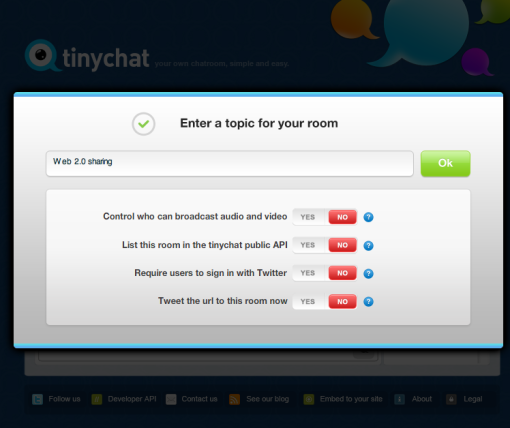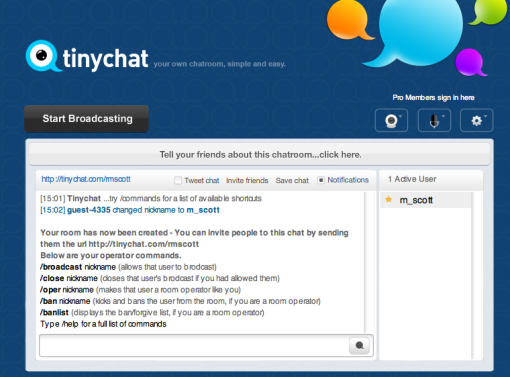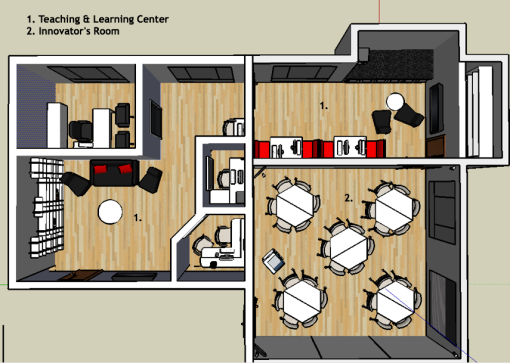Twitter is currently ‘the’ social, Web 2.0 craze (1382% yearly growth). Certainly not every social craze is worth investigating, but Twitter seems to be one that provides considerable value or worth to its many users.
Although a Twitter user since October 2007, it has just been the last year that I discovered Twitter Value. Here are five things that I feel have contributed to this value discovery:
- Finding the right Twitter client
- Following and being followed
- Watching a Tweet Cloud
- Watching a filtered Tweet stream
- Trying it, trying it, trying it ……
Finding a Twitter client
The Twitter browser interface is not the best way to experience Twitter or to find Twitter Value. Once you begin following your tweep, the tweet flood starts and will appear to never end causing Tweet Exhaustion. One way to manage this is to parse your tweets into a manageable grouping. The best way to accomplish this functionality is to use a Twitter client like TweetDeck which runs on a Mac or PC or Nambu which is Mac only and also has an iPhone client or Seesmic Desktop which runs on a Mac or PC. Each one of these clients provides a way to display filtered tweets in a columnar fashion making it much easier to view the tweets.
TweekDeck, Seesmic Desktop, and Nambu each provide the following functionality:
- a user defined filter by hash tags (#) or keywords which becomes a real-time filtered tweet-stream column until the user elects to remove
- the ability to create groups
- a column for all @replies or mentions
- a column for direct messages
All but TweetDeck allow for multiple accounts. All but Seesmic have a Tweet Cloud.
Following and being followed
Followers (your Tweeps) are a critical part of the Twitter environment. Not only do you share with them, they all share with you. With engaged followers one has the ability to crowd-source asking for ideas, seeking help, etc.. The more followers you have that are engaged with your tweets, the more valuable crowd-sourcing becomes.
The best way to grow your followers is to follow people that have similar interests as you. Generally this will work because most people will return a follow with a follow. You can find people of similar interests by using search tools such as these:
http://www.twellow.com/
http://twitter.com/invitations/find_on_twitter
Another way to find the right tweeps is to search on a term of interest such as “academic technology” and then investigate some of the people that show up in this filtered Twitter stream by going to their Twitter homepage and looking at their current tweets. Follow the ones that look the most promising, hopefully they will follow you back.
Additionally value can be found is by following special users, these are users that do not normally share your personal interests, but they share information you are interested in. For example here is a list of Twitter accounts I follow:
- @BreakingNews (Breaking News)
- @TWCi (Weather Channel)
- @foxnews (Fox News)
- @wsj
Here are a list of newspapers that use Twitter:
http://graphicdesignr.net/blog/2008/10/09/september-newspapers-that-use-twitter/
Here is a list of health or medical uses of Twitter:
http://medicalstudentblog.co.uk/twitter-top-100-health-and-medicine/
Here is a list of universities on Twitter:
http://twitter.pbwiki.com/Universities
Here is a list of government agencies on Twitter:
http://twitter.pbwiki.com/USGovernment
Here is a list of Police and Fire services on Twitter:
http://twitter.pbwiki.com/PoliceAndFire
Watching a Tweet Cloud
With TweetDeck and Nambu a word cloud made up of Twitter words is available. This is a great way to keep up with what is happening news wise or what is being shared via Twitter in real-time. The actual Tweet can be viewed just by clicking on a word in the Tweet Cloud. Tweet You can also watch a current Tweet Cloud at http://www.twitscoop.com.
Watching a filtered Tweet stream
Creating a Tweet stream of a filtered term or terms that you are interested in will provide a focused column of tweets. All the Twitter clients previously mentioned have this functionality. This will also expose potential Tweeps of interest that can also be followed.
Trying it, trying it, trying it ……
The final thing that can be done to find Twitter Value is being a persistent user even when value has not been realized. It will take a while to realize ways that Twitter can bring value in your particular case and it will take time to gain enough followers to be useful to you. The only way to accomplish this is being active on Twitter. Give it a try!


















